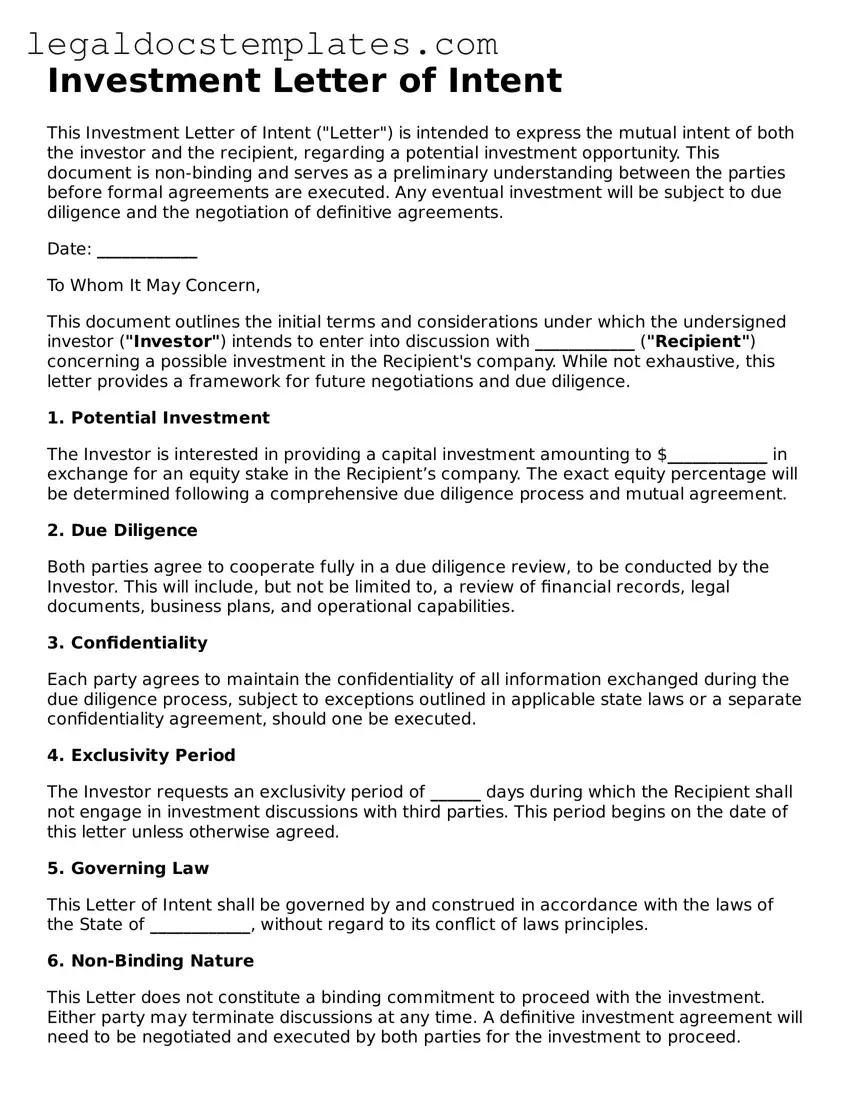Investment Letter of Intent
This Investment Letter of Intent ("Letter") is intended to express the mutual intent of both the investor and the recipient, regarding a potential investment opportunity. This document is non-binding and serves as a preliminary understanding between the parties before formal agreements are executed. Any eventual investment will be subject to due diligence and the negotiation of definitive agreements.
Date: ____________
To Whom It May Concern,
This document outlines the initial terms and considerations under which the undersigned investor ("Investor") intends to enter into discussion with ____________ ("Recipient") concerning a possible investment in the Recipient's company. While not exhaustive, this letter provides a framework for future negotiations and due diligence.
1. Potential Investment
The Investor is interested in providing a capital investment amounting to $____________ in exchange for an equity stake in the Recipient’s company. The exact equity percentage will be determined following a comprehensive due diligence process and mutual agreement.
2. Due Diligence
Both parties agree to cooperate fully in a due diligence review, to be conducted by the Investor. This will include, but not be limited to, a review of financial records, legal documents, business plans, and operational capabilities.
3. Confidentiality
Each party agrees to maintain the confidentiality of all information exchanged during the due diligence process, subject to exceptions outlined in applicable state laws or a separate confidentiality agreement, should one be executed.
4. Exclusivity Period
The Investor requests an exclusivity period of ______ days during which the Recipient shall not engage in investment discussions with third parties. This period begins on the date of this letter unless otherwise agreed.
5. Governing Law
This Letter of Intent shall be governed by and construed in accordance with the laws of the State of ____________, without regard to its conflict of laws principles.
6. Non-Binding Nature
This Letter does not constitute a binding commitment to proceed with the investment. Either party may terminate discussions at any time. A definitive investment agreement will need to be negotiated and executed by both parties for the investment to proceed.
Please indicate your agreement with these terms by signing and returning a copy of this letter.
Sincerely,
Investor Name: __________________
Signature: __________________
Date: __________________
Agreed and Accepted:
Recipient Name: __________________
Signature: __________________
Date: __________________
